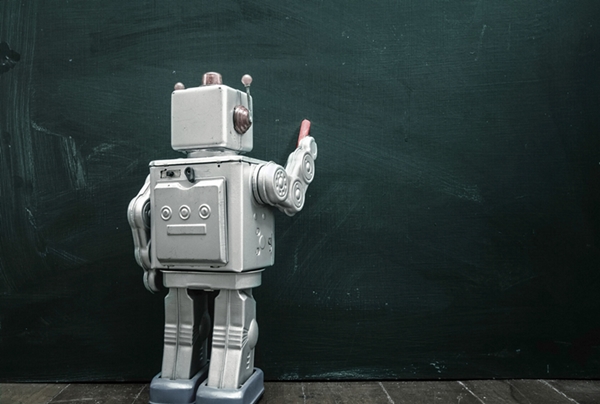In recent years, much has been made over the fact that automation has caused a great deal of job loss, including the loss of the middle class in America. Many skilled labor jobs are slowly being replaced by automation, leaving a workforce made up of either highly skilled (and highly paid) professionals or lower skilled service workers who receive lower pay. Teaching is a “middle class” profession that, until now, has been largely unaffected by this shift toward automation. The question, of course, is whether or not this will remain true.
Automated Learning Innovations in the Teaching Field
In the schools of science fiction, learning has become entirely automated. Students log in to school from their own homes, using a virtual interface in order to connect with their peers and their lessons. In some cases, a single teacher deals with hundreds or thousands of online children. In others, there is no actual “teacher” at all, but rather a robotic interface that allows the children to learn. Unfortunately, these advances are no longer the stuff of science fiction alone. In recent years, several shifts have arisen that allow for a more virtualized learning platform.
Online schools allow students access to educational materials without ever setting foot inside a classroom. They’re able to do their learning from wherever they are–an invaluable tool for students who are ill and unable to attend school, who are bullied in traditional school environments, or who have incredible sports careers that prevent them from learning on a traditional schedule. Even online schools, however, still have teachers who are in place to monitor student progress, guide the learning process, and ensure that classes move smoothly. Online classrooms also require the active participation of the student’s parents or another learning coach who is able to guide the student throughout the learning process.
Khan Academy offers an online learning style format that provides students with the chance to learn through YouTube videos, rather than interacting with a classroom teacher. This method works well for driven students who are eager to acquire learning and information, especially since students are able to work at their own pace. It is not, however, a method that works well for slow learners or those who require additional support.
Distance learning is set up to allow students to attend class without being in school. Like online learning, it is a platform that allows for personalization of the learning process. It relies less on the presence of a teacher and more on the assistance of a parent or learning coach, as well as active student participation and desire to learn.
Though these methods continue to grow, they have yet to replace traditional teaching. In fact, the teaching profession as a whole has many qualities that simply are unable to be replicated in this digital movement.
The Qualities of a Teacher
Teachers must possess many qualities and wear many hats throughout the school day. Many of these qualities, fortunately, aren’t possible for robots to replicate–especially not with the technology currently available on the market.
Creativity
Teachers must be able to come up with lessons that are interesting, entertaining, and creative. When faced with a struggling student, a rote answer is not always enough; instead, teachers need unique ways of interacting with students, changing their lessons, and raising student interest in the subject.
Empathy
There’s a common saying among teachers that states, “Students don’t care what you know until they know that you care.” Students are more likely to want to learn from people who genuinely care about them than they are to want to learn from books. This ability to empathize is one that robots simply lack–and the best program in the world can’t change the sense of “other” that comes along with learning from a machine.
Acting on unpredictable data
Children aren’t predictable data streams. In many cases, they will act in ways that are entirely unexpected–and teachers need to be able to react quickly and instinctively to many of those changes. It’s impossible for a robot to understand all of the factors that go into human interactions, which are better governed by human beings than by automation.
Teaching as a whole is likely to be one of the professions that are never fully automated. At the preschool and elementary age, in particular, students need to be shaped by humans, not robots, in order to develop into the confident, knowledgeable humans they need to be in order to experience success outside of academia. If you want your children to learn in a setting with creative, empathetic teachers who are prepared to offer your children everything they need in order to succeed in this age of automation, contact us today to learn more.


